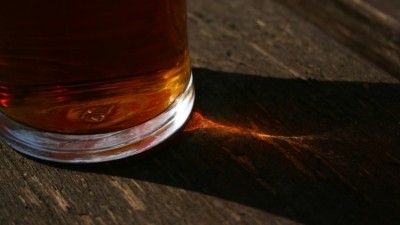How to design your bar

Fast-paced, highly stressful and an arena requiring extreme levels of organisation. In truth, these are not the words that first come to mind for many when thinking of running a bar, nor would they think about the effect layout can have on an operation’s ability to fly.
Yet, the fact is, shoddy bar design could have mammoth repercussions for an operator, including sluggish service, wastage and low staff morale to name a few. In short, all three of these factors will cost you money in one way or another.
It is vital licensees deliver smooth, quick and efficient service each and every time a customer orders a drink because good customer experiences lead to more spend.
First thing to consider
One of the first things to consider when setting up a spirits offer ready to serve high-quality mixed drinks and cocktails is the positioning of the spirits bottles on the back bar.
The best arrangement is closely associated with the ideal range on offer, which we have covered in previous chapters. ‘Pouring’, ‘Upsell’ and ‘Choice’ should be displayed in a pyramid with the most expensive spirits on the top shelf (Choice), mid-price spirits on the middle shelf (Upsell) and the cheapest (Pouring) on the bottom shelf at bar level.
Top three tips to inspire customers
1. Signage: signposting cocktails through an illuminated or chalkboard sign that stands out behind the bar will increase salience and bring attention to a choice that customers may not otherwise have considered
2. Images of serves: a picture or a video of a great-looking cocktail that can be reproduced by a bartender will bring drinks to life and act as an incentive for consumers to order one
3. A premium pyramid: place the most expensive spirits within a category (eg, gin) on the top shelf, the mid-price spirits on the middle shelf and the cheapest spirits at bar level. Grouping spirits into simple price cues can help consumers navigate the category according to occasion
Not only does this help customers better understand the offer, it also relates to how frequently staff will use each of the products. For instance, it is more likely staff in many bars will be reaching for the Smirnoff for a vodka and coke, than the Ketel One. So, it speeds up service.
But, the smaller aspects of bar design also have a knock-on effect. Prepping before service can save each member of staff minutes. While this does not sound vast, if you consider how many members of staff you might have and multiply that by the number of drinks they each serve, the argument towards being prepared becomes more convincing.
Preparation areas to consider include ensuring napkins, ice, mixers, spirits and garnishes are all replenished and accessible. Glassware should be cleaned, polished and grouped together accordingly to guarantee steady service.
Cocktail making equipment
Each workstation on the bar should have easy access to the above (within no more than two steps) to ensure drinks can be served perfectly with as little stress as possible. Not forgetting any cocktail-making equipment is cleaned, ready to use and in close reach. Also, be sure drip trays are cleaned, dry and readily available.
Though we have delved deep into the practical side of bar design, such as the spirits and the actual making of drinks, customers will not be able to order a drink if they do not know what is on offer.
Any marketing platforms, such as menus, chalkboards and other displays, should be up-to-date, clean and within easy access to customers. Your tills should also have the right amount of cash in them so customers are not left hanging around waiting for their change.
Finally, the ambience of the operation must be ‘on point’. Any extras such as music, candles, flowers and lighting act as an extra element of attention to detail and imply quality; ensure that they are regularly replenished and are adjusted before service.







